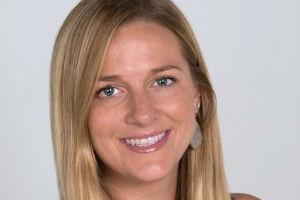
MyDay® multifocal contact lenses provide patients with presbyopia a long-awaited combination of comfort and optimal visual acuity at all distances.
As people progress into presbyopia, they often turn to wearing reading glasses over their contact lenses—or drop out of contacts entirely.1 Now, game-changing MyDay® multifocal from CooperVision® provides these patients with a contact lens that checks all the boxes:
- Excellent Vision
- Incredible Comfort
- Ocular Health2
MyDay® multifocal features Binocular Progressive System™, an innovative3 Add system that uses different lens designs to optimize vision for all levels of presbyopia. These allow the eyes to work in tandem, which gives a simple initial fit and an easy progression as the near vision requirement increases.3
Prescribers of MyDay® multifocal share the wide variety of patients they see as prospective wearers, their approach to those initial conversations, and how their patients with presbyopia are responding to this innovative lens.

With MyDay® multifocal now in your toolbox, what types of patients are you focused on fitting in this lens?
Dr. Heitmeyer: There is this concept of making patients 20/happy with multifocal contact lenses, and these patients don’t realize what they’re missing out on but their near acuity isn’t that great and their distance vision is a bit compromised. Fitting them in MyDay® multifocal removes those limitations and provides a big “wow factor” for these patients. There is a huge opportunity to switch existing multifocal or monovision wearers into a product that’s going to be a better fit for them all around.
Dr. Foster: Newly presbyopic emmetropes come in asking, “When can I get LASIK?” and I explain it doesn’t work that way. Then they think the only option is to wear readers. Most have never considered that contact lenses could work for them. While presbyopic emmetropes have in the past been very difficult to fit in multifocals, the distance vision is so good in MyDay® multifocal that I’m comfortable trying it with these patients. It opens the door to a whole new group of wearers.
Dr. Tang: I agree with Dr. Foster—I’ve enjoyed presenting MyDay® multifocal as an option to patients who had LASIK 10 to 20 years ago. They still have clear distance vision and with the onset of presbyopia, the thought of reading glasses is so upsetting to them. So we’ll try MyDay® multifocal and it has been very successful. They like the comfort, and they don’t have issues with dry eyes. The 1-day modality is just so convenient that they don’t mind going back to contact lenses.
With so many patients unaware of multifocal contact lenses—or they know, but have misconceptions about them—what is that conversation like?
Dr. Patel: First, it’s recognizing that we need to have the conversation because it’s true that many people have no idea that multifocal contact lenses are a thing. I see it as a responsibility to let them know about all of their options. I may ask, “Are there times you just don’t want to wear glasses?” or “Do you know you have the opportunity to wear contact lenses?”
Dr. Tang: In the past, sometimes I wouldn’t even bring up the topic of contact lenses to somebody who has only worn glasses their whole life because it just seems like that’s what they prefer. But I don’t assume anything anymore. I ask every single patient, “Do you think you may benefit from being able to see without glasses on?” and if I get even a hint of curiosity, I present MyDay® multifocal as an option. I also make sure to explain that they don’t have to be worn every day—they can be for weekends, sports, and things like that.
Dr. Foster: For patients who are contact lens dropouts or have had difficulty with other lens materials, I tell them, “I know you’ve tried all these other multifocals and they haven’t been comfortable for you, but this is the one. It’s totally different.”
In your experience, what has been your patients’ reactions to MyDay® multifocal?
Dr. Tang: We’ve had tremendous success with our patients in MyDay® multifocal because they feel they’re getting something they’ve never had before. They don’t have to think about their vision anymore. They no longer have to reach for those reading glasses, and they feel they have regained their youth. It is really rewarding to be part of enhancing their lifestyles and making their lives easier.
Dr. Foster: I’ve been surprised at how many people I’ve been able to get back into contact lenses that dropped out because of comfort. It’s exceeded my expectations by far.
Dr. Patel: With other multifocals, sometimes patients deal with some discomfort at first and you have to work uphill to assure them to hang in there because it’ll get better. But the initial comfort of MyDay® multifocal is so high that I find patients are immediately confident in the lens.
Dr. Heitmeyer: It’s a fun product to fit from that standpoint—when a patient comes in and they’ve been elsewhere, maybe they’ve gone through nine visits and still haven’t found a multifocal lens that works. We pull the MyDay® multifocal trials, put them on, and the first one is a success. I almost find myself trying to elicit a complaint, like is distance a problem? What about near vision? But it’s just not there. The high rate of first-fit success really wows patients. They think it’s amazing.








